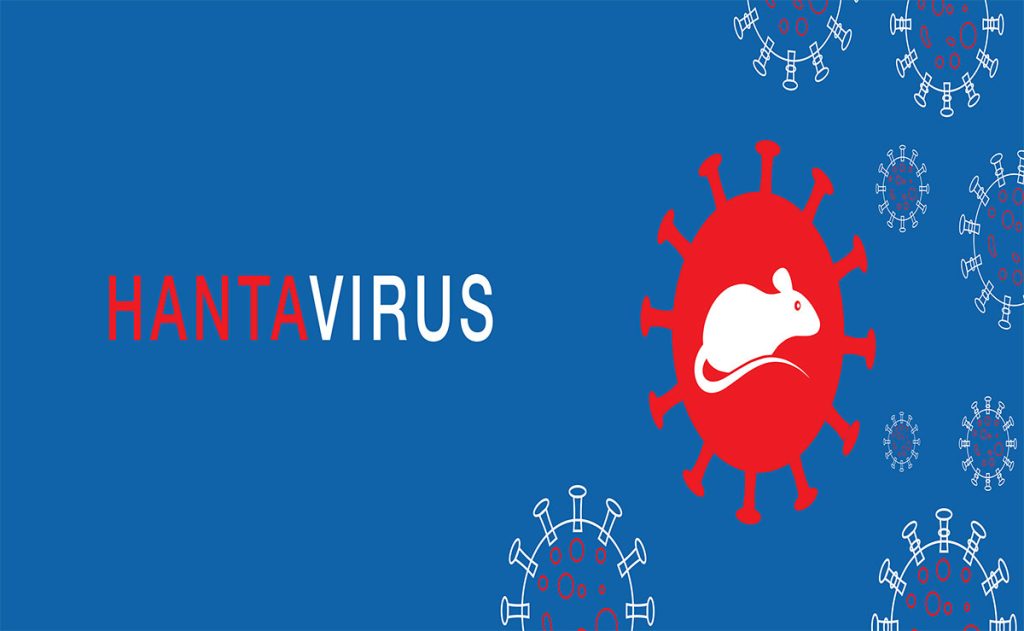
Features
Health & Safety
Health & Safety: Beware of hantavirus infections from job worksites
Breathing in rodent waste can be dangerous
August 31, 2022 By CCOHS
 Treat all rodent droppings as being potentially infected. Photo credit: Yanmar
Treat all rodent droppings as being potentially infected. Photo credit: Yanmar Experienced landscapers are trained to recognize hazards that pose an immediate safety risk, like those that come with the use of heavy equipment and cutting tools, or encountering wild animals, poisonous plants or unpredictable weather. But it’s also important that outdoor workers be trained to protect themselves from parasites and viruses that may take time to present symptoms, including hantavirus.
Hantavirus is a rare, sometimes fatal, lung infection caused by breathing in contaminated particles from the droppings, urine, and saliva of infected deer mice and other wild rodents like cotton rats, rice rats, the white-footed mouse and the red-back vole. The virus can cause hantavirus pulmonary syndrome, a rare but serious lung disease. On worksites where workers are exposed to rodents, employers are often required to develop and implement an exposure control plan to reduce the risk of infection from biological hazards, like hantavirus.
Exposure and health effects
Workers can contract the hantavirus infection through inhalation of respirable droplets of saliva or urine, or through the dust of feces from infected wild rodents, especially the deer mouse. Transmission can also occur when contaminated material gets into broken skin, or possibly, ingested in contaminated food or water.
If exposed, symptoms of hantavirus pulmonary syndrome usually start within one to six weeks. The disease begins as flu-like symptoms including fever, muscle aches, cough, headaches, nausea, vomiting, and shortness of breath, rapid heartbeat, and gastrointestinal problems. Some people develop severe symptoms that can be life threatening. Instruct workers to seek medical attention immediately if they have a cough, fever, and shortness of breath.
Eliminate the risk
Before sending workers to sites where they may be exposed to rodents or their droppings, make sure they receive thorough training on how to work safely in these areas and with materials that might be contaminated with hantavirus. In jurisdictions where an exposure control plan is required, make sure employees have had a chance to review the plan and can access it for reference.
To reduce the risk of breathing in the particles, workers should limit dust creation during clean-up and treat all rodent droppings as being potentially infected while taking additional precautions to prevent exposure.
Avoid raking or sweeping an affected area as particles can become airborne and breathable by workers. Infection is also possible by touching something that has been contaminated, and then touching the nose, mouth, or eyes. Preventing rodent infestations and properly cleaning and disinfecting contaminated areas promptly can help prevent disease.
- Steps for dealing with contaminated materials
Before getting started, make sure all workers are educated and trained on the hazards involved in cleaning up waste, leaves or dust that may contain mouse droppings, and the controls in place to protect them. - If indoors, ventilate the space by opening doors and windows for at least 30 minutes before starting and keep the space ventilated while cleaning and for a period before re-entry. If there is reason to suspect that rodents have access to heating and cooling ventilation systems, contact a professional rodent exterminating service or qualified ventilation professional.
- For general clean-up activities where there is not a heavy accumulation of droppings, wear disposable protective clothing and gloves (neoprene, nitrile, or latex-free), rubber boots, and a disposable N95 respirator*.
- To clean up contaminated areas with heavy accumulations of droppings, it is necessary to use powered air-purifying (PARP) or a tight-fitting respirator* with P100 filters and eye or face protection to avoid contact with any aerosols.
- Spray contaminated areas (such as bins, barrels, trailers, or shovels) with a bleach solution or disinfectant and remove droppings with a damp disposable mop or cloth.
- Place contaminated materials in a plastic bag and seal for disposal. Disinfect reusable personal protective equipment by wiping rubber boots and goggles with disinfectant, disposing respirator cartridges, as well as washing respirators and gloves.
- Place all disposable protective clothing, gloves, and respirators in plastic bags and seal for disposal. Contact your local environmental authorities about approved disposal methods.
- Thoroughly wash hands with soap and water after removing gloves.
* Note that the use of respirators in the workplace requires fit testing and training on their safe use, storage, and maintenance.
Although rare, hantavirus infections have a 40 per cent fatality rate. By developing a plan to limit workers’ exposure on the job and acting immediately should exposure occur, landscapers can demonstrate a commitment to worker safety and set teams up for a productive season. Be sure to review the legal requirements for your jurisdiction and develop policies and training accordingly.
The Canadian Centre for Occupational Health and Safety (CCOHS) promotes the total well being of workers in Canada by providing information, training, education, systems and solutions that support health and safety programs and injury and illness prevention.
www.ccohs.ca
Print this page